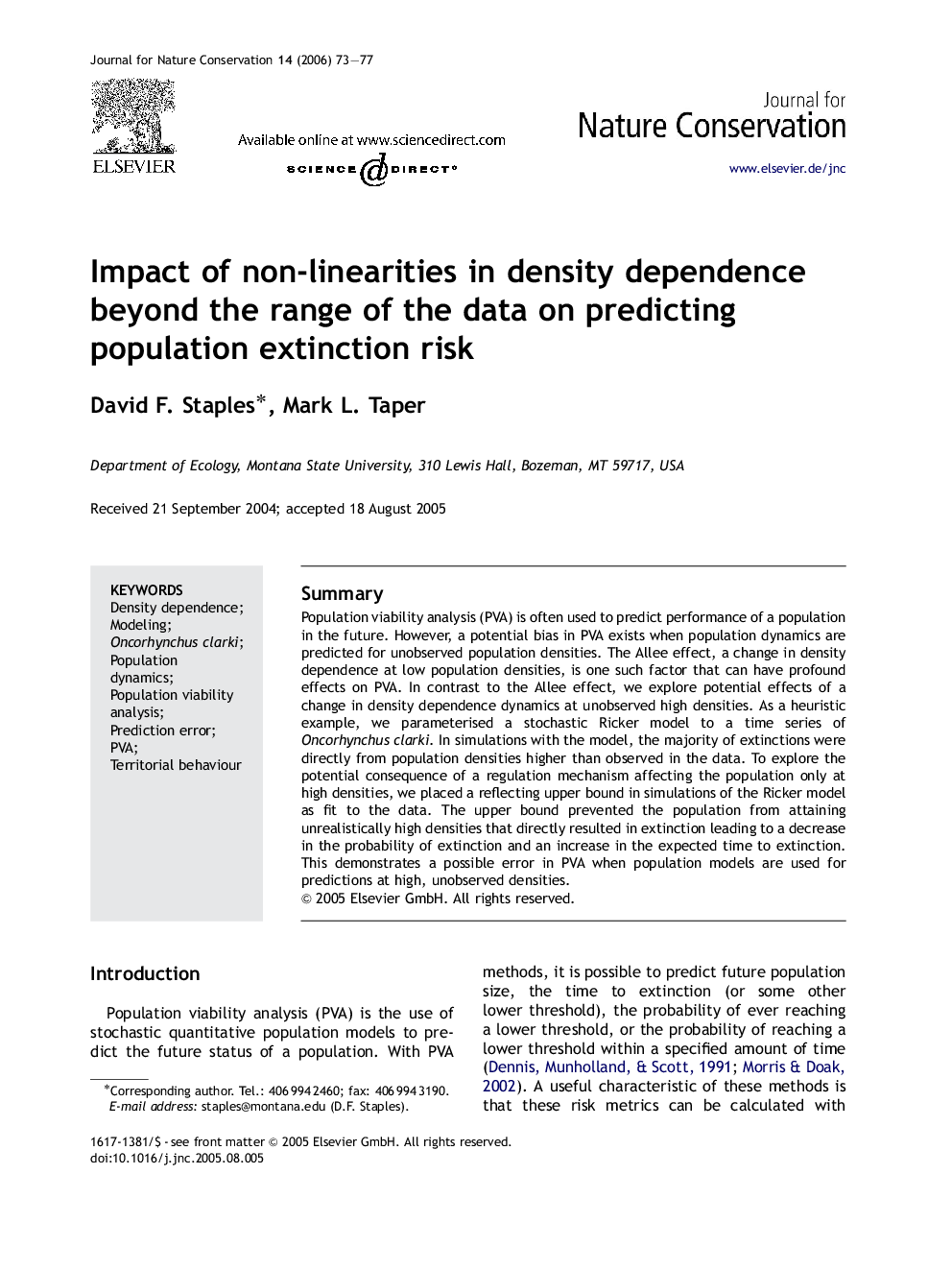| Article ID | Journal | Published Year | Pages | File Type |
|---|---|---|---|---|
| 4400284 | Journal for Nature Conservation | 2006 | 5 Pages |
SummaryPopulation viability analysis (PVA) is often used to predict performance of a population in the future. However, a potential bias in PVA exists when population dynamics are predicted for unobserved population densities. The Allee effect, a change in density dependence at low population densities, is one such factor that can have profound effects on PVA. In contrast to the Allee effect, we explore potential effects of a change in density dependence dynamics at unobserved high densities. As a heuristic example, we parameterised a stochastic Ricker model to a time series of Oncorhynchus clarki. In simulations with the model, the majority of extinctions were directly from population densities higher than observed in the data. To explore the potential consequence of a regulation mechanism affecting the population only at high densities, we placed a reflecting upper bound in simulations of the Ricker model as fit to the data. The upper bound prevented the population from attaining unrealistically high densities that directly resulted in extinction leading to a decrease in the probability of extinction and an increase in the expected time to extinction. This demonstrates a possible error in PVA when population models are used for predictions at high, unobserved densities.
